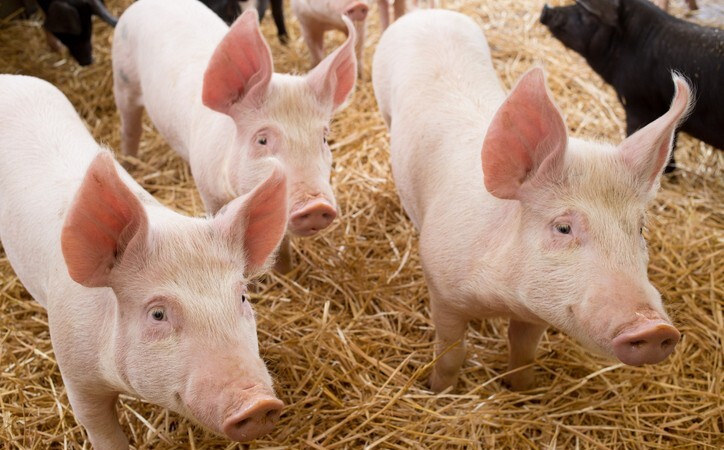

Adapting to new food is a complicated process for weaning piglets. What measures can be taken to ensure a smooth transition from lactating to weaned piglets?
Most piglets are weaned between three and four weeks of age, which is very soon after birth, but until now the most economical solution. Here are five tips to get the best results out of piglets that might need some extra attention.
Start with healthy piglets
This might sound very obvious, but it is crucial for a smooth weaning process. Healthy piglets will start eating sooner and this is the key to avoid a weaning dip. We tend to focus on solving any problem that the piglets may experience after weaning but we should not forget to look in the farrowing rooms. The problems might occur due to lack of milk production, lack of uniformity of the piglets at birth, E. coli problems, etc. Problems that start very early in the life of piglets are hard to restore later on.
Comfortable housing
Piglets hate draughts and they need warmth, the rooms need to be around 25°C. When they are moved to the nursery, the rooms should be cleaned and disinfected. Maybe even more important is to get the room dry after cleaning. This can be a problem sometimes when there is little time between cleaning and the relocation of piglets. Especially in colder climates where it is very costly to heat the rooms properly, it can be tempting to save heating costs and to put the piglets in a room that is still too wet and too cold. This is a major risk for health problems. Piglets need to spend a lot of energy to keep their body temperature high enough.
Keep piglets from the same litter together
Research has shown that mixing piglets from different litters is a huge risk factor for diseases like Actinobacillus pleuropneumoniae (App) and Streptococcus suis. Especially around weaning when they do not have a fully developed immune system and the protection of maternal antibodies decreases. When piglets are moved into the nursery, try to minimise mixing because this might enhance the spreading of diseases through the rooms. Stress due to the formation of new hierarchies will also be minimised. Simply put: piglets that are busy fighting won’t eat.
Training piglets to eat
The biggest challenge is to get piglets to eat after weaning. In order to achieve this they need to be trained before weaning. Tasty and fresh feed can be offered in small portions from the second week of life. The objective is to let piglets discover eating out of a bowl, so that after weaning they will easily find their new source of feed. It is advised not to change this nursery feed for the first few days after weaning. A smooth transition will minimise the number of piglets that won’t eat the first day(s). These hunger strikers are more likely to develop problems in the weeks that follow. If the system allows it, try to use feeding systems where all piglets can eat at the same time.
Water and feed hygiene
Piglets are very susceptible to infections after weaning. All necessary measures should be taken to reduce the risk of contact with pathogens. Reducing the amount of pathogens in water and feed is a good starting point. But there are more ways for a pig to get orally infected, such as contact with contaminated faeces, other pigs, etc. If you want to reduce the risk of oral infection, the best advice is to use organic acid based solutions in feed and drinking water of piglets. The organic acids will not only kill the pathogens in feed and water, but also in the stomach of the piglets. It is a very common and cost effective way to enhance the performance of piglets after weaning.
 Contact Jaguza Support
Contact Jaguza Support